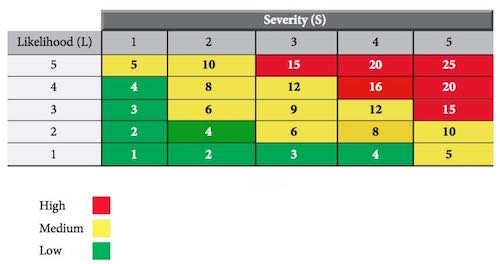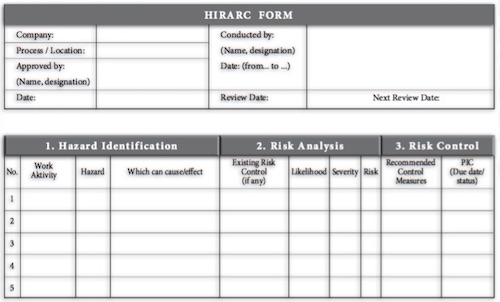The hazard identification and assessment methodology shall include : -
a. Steps and time frame for identifying and assessing the hazards.
One must define the steps for the identification of hazards and a time frame for this identification. The following information should be included : -
- who will be responsible for the identification: for example, it may be the work place health and safety committee, or an individual or individuals appointed by the committee;
- the way in which the identification reports are processed: for example, they may be compiled and processed by the commit tee, or by individuals appointed by the committee; and
- the identification time frame: for example, the identification of hazards for workshop A must be completed in December, for workshop B in April and for workshop C in November.
b. The keeping of a record of the hazards.
After having identified the hazards, one must establish and maintain an identification record, either in print or electronic format.
c. A time frame for reviewing and, if necessary, revising the methodology.
The date for the review of the identification: for example, the review of the identification method will be carried out every three years. To complete hazard identification, one can use techniques to identify hazards. Some examples of techniques include, but are not limited to :-
- work place inspections;
- task safety analysis or job hazard analysis;
- preliminary investigations;
- potential accident factors;
- failure analysis;
- accident and incident investigations.
It is in your interest to adopt your own process and your own identification techniques so that they match oner management procedures and the size of business. In fact, the identification method may vary depending on the size of the work place.











